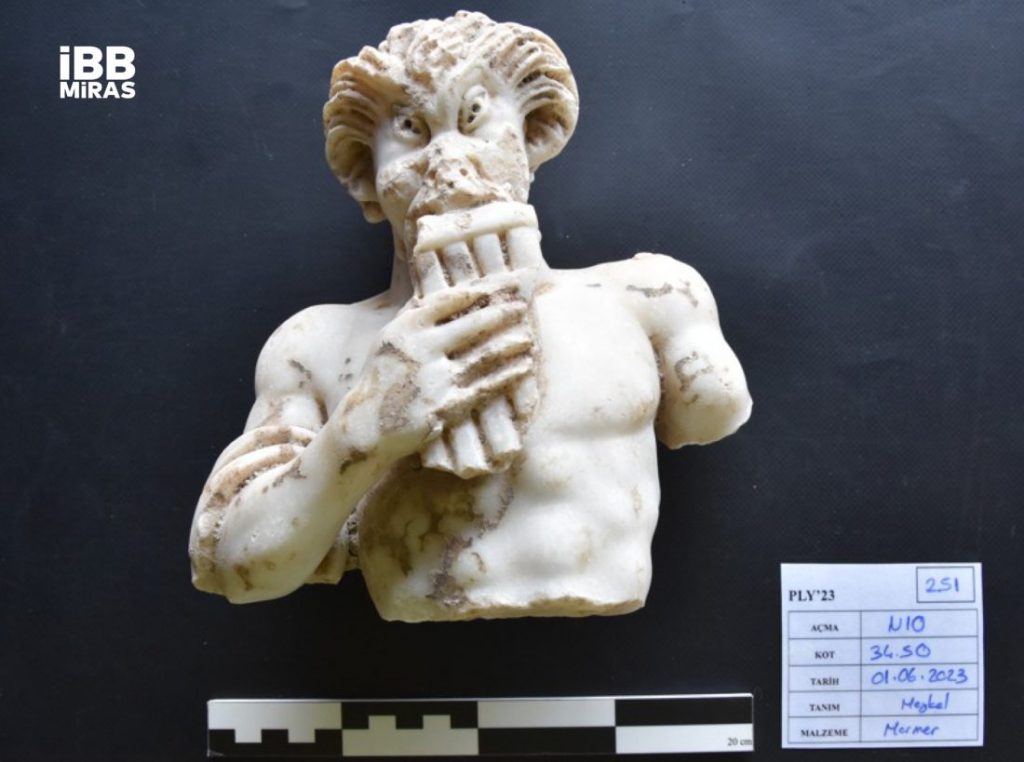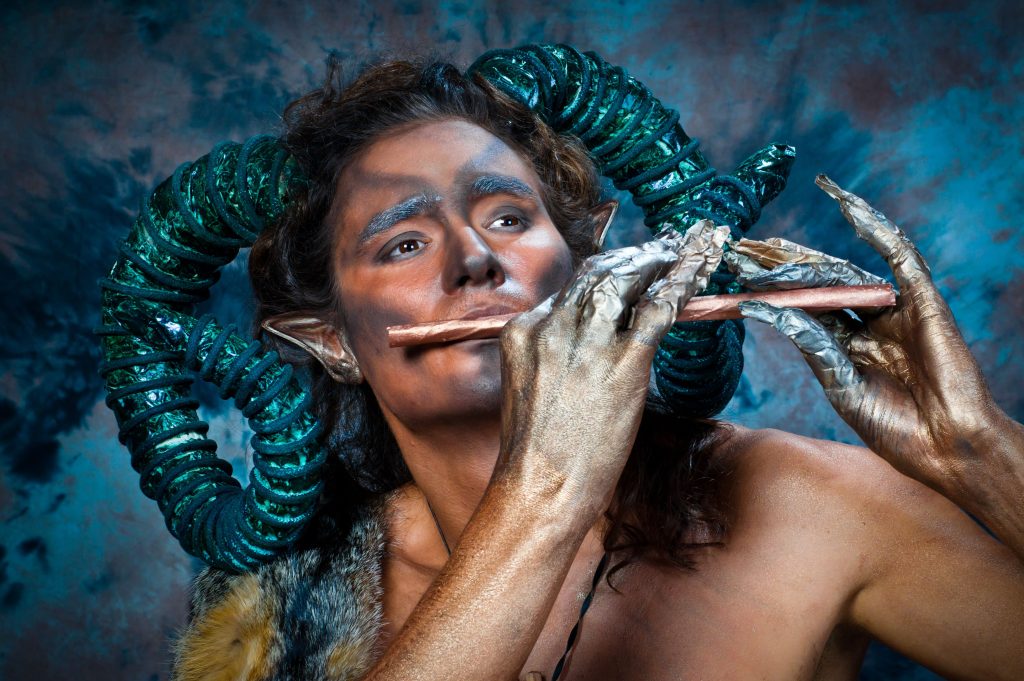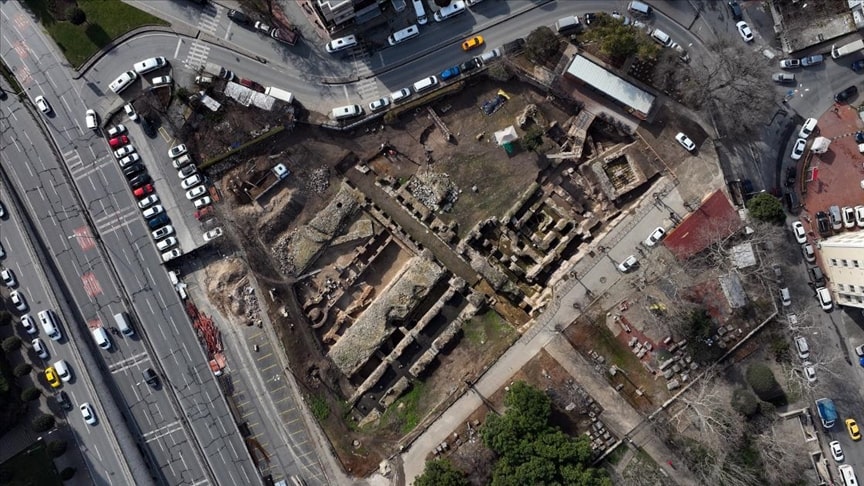
A 1700-year-old statue of Pan unearthed during the excavations at Polyeuktos in İstanbul
The 1700-year-old statue of Pan was unearthed during the excavations conducted by İstanbul Metropolitan Municipality (Istanbul Metropolitan Municipality Cultural Heritage Department) at the Polyeuktos site.
The excavations at Saraçhane Archaeology Park, where the Church of St. Polyeuktos is located, have been ongoing continuously since June 8, 2022.
During the excavation works at Saraçhane Archaeology Park, which is located in the Saraçhane area of Fatih district, Istanbul, a 1700-year-old statue of Pan was unearthed at the site of the Church of St. Polyeuktos.

Mahir Polat, the Head of İstanbul Metropolitan Municipality (İBB) Cultural Heritage Department, announced the discovery of the Pan statue on his social media account.
📣 Our WhatsApp channel is now LIVE! Stay up-to-date with the latest news and updates, just click here to follow us on WhatsApp and never miss a thing!!
“This morning, we unearthed yet another magnificent archaeological discovery in history-rich Istanbul. In the heart of Istanbul, at our excavation site in Saraçhane, we uncovered a 1700-year-old statue of Pan from beneath the ground.
Together with the previously found statue, we now have reached the section of İstanbul’s lost Roman Palace. The excavation at Polyeuktos has revealed remarkable insights into the city’s past.”
Indeed, İstanbul is a treasure trove of history and a tourism paradise. Together, we will work hand in hand to elevate it to the well-deserved status of a world tourism hub.”
Pan
In Greek mythology, Pan is a deity associated with nature, forests, and shepherding. He is often depicted as a creature with the upper body of a human and the lower body of a goat, known as a “satyr.” Pan is linked to the forces of nature and is frequently seen in forests, mountains, and among shepherds.
Pan is considered the protector of shepherds and is renowned for his ability to play the flute. It is believed that his melodic tunes bring life to nature. He is also seen as a somewhat mischievous and frightening figure who sometimes plays pranks on shepherds.

Pan’s association with nature and his presence among shepherds is an integral part of Greek mythology and ancient beliefs.
Pan is known as the companion of Dionysus and frequently takes part in festivals associated with him. Additionally, he interacts with other gods in Greek mythology. For instance, in one story, Pan is caught eavesdropping on the Pantheon, the place where the gods assemble on Mount Olympus.
The god Pan holds a significant place in Greek mythology as a figure associated with the power of nature, nature’s sounds, and wild life.
The Church of St. Polyeuktos
The Church of St. Polyeuktos is located in the Saraçhane neighborhood of the Fatih district in Istanbul.
The church is known to have been built during the 5th century, in the reign of Emperor Theodosius II.

The Church of St. Polyeuktos was one of the most important churches of the Byzantine Empire. Emperor Theodosius II ordered its construction, and the church was completed during the reign of his son Emperor Arcadius. The name of the church comes from St. Polyeuktos, who was the sister of Aelia Flaccilla, the wife of Emperor Theodosius II.
During the Byzantine period, the church served as a significant center for religious ceremonies. However, in the 12th century, it suffered significant damage due to an earthquake but was later repaired. In the 15th century, after the Ottoman Empire conquered Constantinople (Istanbul), the church was converted into a mosque and renamed as the “Eski İmaret Camii” (Old Alms Mosque).
Cover Photo: İBB Miras
You may also like
- A 1700-year-old statue of Pan unearthed during the excavations at Polyeuktos in İstanbul
- The granary was found in the ancient city of Sebaste, founded by the first Roman emperor Augustus
- Donalar Kale Kapı Rock Tomb or Donalar Rock Tomb
- Theater emerges as works continue in ancient city of Perinthos
- Urartian King Argishti’s bronze shield revealed the name of an unknown country
- The religious center of Lycia, the ancient city of Letoon
- Who were the Luwians?
- A new study brings a fresh perspective on the Anatolian origin of the Indo-European languages
- Perhaps the oldest thermal treatment center in the world, which has been in continuous use for 2000 years -Basilica Therma Roman Bath or King’s Daughter-
- The largest synagogue of the ancient world, located in the ancient city of Sardis, is being restored











Leave a Reply